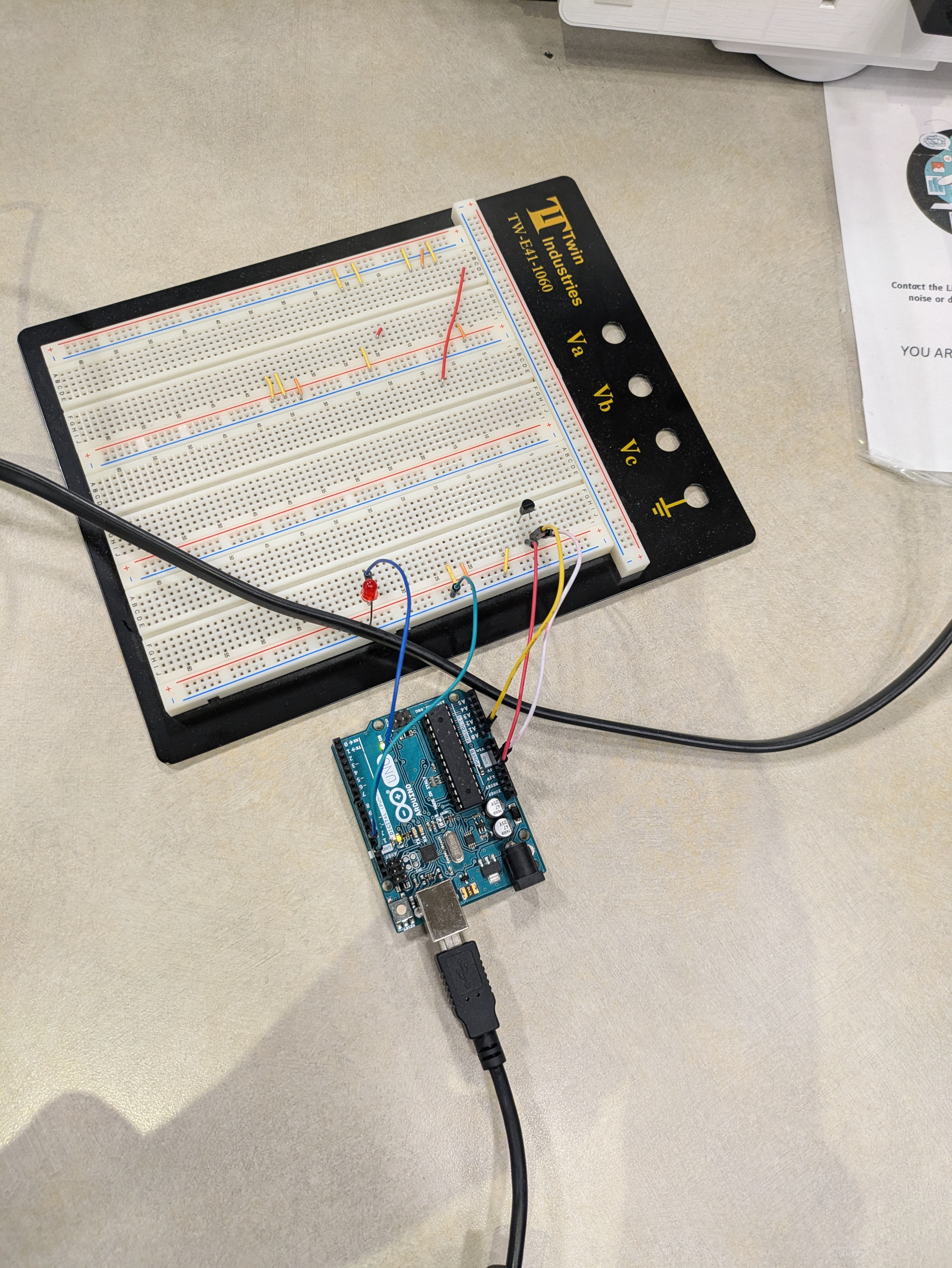Temperature Monitoring & Alert System

Designed a thermistor-based temperature system that triggers an LED when exceeding 80°F.
Temperature Reading Circuit with Arduino:
We designed a temperature reading circuit using an Arduino to demonstrate practical applications of thermistor-based temperature sensing and digital output control.
Project Overview:
This project involves a temperature sensor circuit integrated with an Arduino microcontroller. We utilized a thermistor to measure ambient temperature. The Arduino then processes the analog signal from the thermistor, converts it to Fahrenheit, and displays the temperature reading. If the temperature exceeds 80°F, an LED connected to a digital pin is triggered, indicating a high-temperature alert.
Key Components:
- Arduino microcontroller
- Thermistor
- Resistors
- Breadboard and jumper wires
- LED
Key Features:
- Real-time temperature monitoring
- Temperature conversion from Celsius to Fahrenheit
- LED alert for temperatures exceeding 80°F
Arduino Code
#define sensorPin A0
int pin12 = 12;
void setup() {
// put your setup code here, to run once:
pinMode(pin12, OUTPUT);
Serial.begin(9600);
}
void loop() {
// put your main code here, to run repeatedly:
int reading = analogRead(sensorPin);
float voltage = reading * (5.0 / 1024.0);
float temperatureC = (voltage - 0.5) * 100;
Serial.print("Temperature: ");
Serial.print(temperatureC);
Serial.print("\xC2\xB0");
Serial.print("C | ");
float temperatureF = (temperatureC * 9.0 / 5.0) + 32;
Serial.print(temperatureF);
Serial.print("\xC2\xB0");
Serial.print("F");
if(temperatureF > 78){
digitalWrite(pin12, HIGH);
} else if(temperatureF <= 78){
digitalWrite(pin12, LOW);
}
Serial.println("\n");
delay(1000);
}
Tinkercad Schematic
